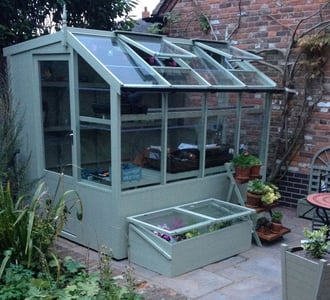How to Build Your Own Greenhouse: A Step-by-Step Guide
How to Build Your Own Greenhouse: A Step-by-Step Guide
Blog Article
Greenhouse gardening is one of the very rewarding ways to develop flowers year-round, but it takes careful preparing and practices to ensure success. With controlled conditions, you can nurture plants regardless of outside temperature, but it takes the right strategies to generate a perfect setting as part of your greenhouse.Here are a few necessary recommendations to help your crops succeed throughout the year.

Focus on Temperature Control
Maintaining the best temperature is critical for greenhousegardening. Flowers prosper in different heat stages relying on their form, therefore it's essential to check and alter temperatures accordingly. Throughout colder months, invest in a reliable greenhouse heater or padding techniques to keep warmth. Use automated vents or fans in summer to stop overheating, as conditions above 85°F may tension flowers and stop their growth. Pairing these methods with a simple thermometer lets you keep a consistent environment.
Manage Humidity Levels
While greenhouses obviously maintain larger moisture levels, an excessive amount of moisture may inspire shape or form growth. For a healthy harmony, measure moisture frequently employing a hygrometer. Aim for around 50-70% relative moisture, modifying with proper ventilation programs or even a dehumidifier if needed. Moreover, spacing flowers properly ensures better air circulation, reducing the risk of fungal diseases.
Choose the Right Plants
Not all crops are suited to greenhouses. To increase produce and success, choose crops that align well with the season and your greenhouse conditions. All through colder weeks, grow crops like lettuce, kale, or broccoli, which thrive in a colder environment. Warm-weather crops like tomatoes, cucumbers, and peppers blossom in the spring or summer within larger temperatures. Pairing complementary crops also assists build biodiversity and normally deters pests.

Use Quality Soil and Fertilizers
The quality of your soil immediately impacts place growth. Choose a nutrient-rich land mix specifically made for greenhouse plants. Enrich your planting bedrooms with organic matter like compost to enhance fertility. Frequently give your flowers with fertilizers matched to their needs—some flowers might need large nitrogen for leafy growth, while others prosper with potassium-rich mixtures for good fresh fruit development.
Practice Integrated Pest Management
Pests will get their way into also the absolute most managed greenhouses. Present helpful insects like ladybugs to focus on dangerous pests such as for instance aphids naturally. Check plants often and remove any pests personally if noticed early. Contemplate natural or compound solutions as a last resource but utilize them infrequently to avoid damaging helpful bacteria and organisms.
Click here for more information kindly visit the website at greenhousestores.co.uk/ to get the knowledge about greenhouse. Report this page